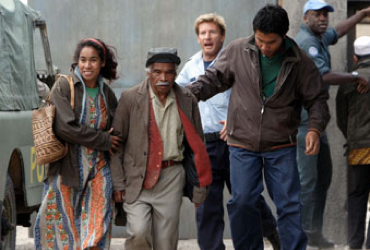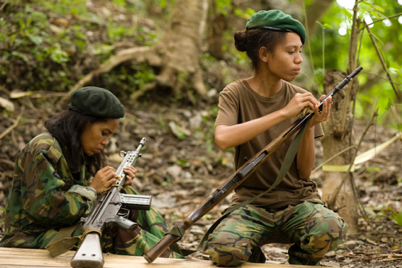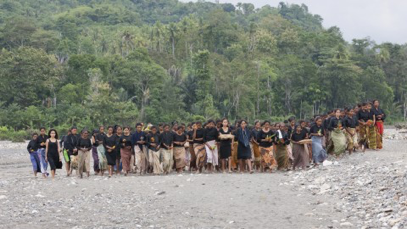Historical Fictions in East Timor: Time, Violence and Gender in Post-Independence Film Production
The article discusses film production in and about Timor-Leste in direct connection with its political history. In an environment strongly marked by oral culture, where the literate world speaks little to citizens, the conditions of film production also involve a limited socio-technical network for the creation and distribution of films.
Audiovisual consumption is often hindered by serious infrastructural problems, such as access to electricity, especially outside of the capital, Díli. Also, scarce public funding means that the audiovisual sponsors are typically private individuals and foreigners, promoting productions under international and inter-institutional cooperation regimes. I make a contrapuntal reading of three international award-winning historical fictions – Answered by Fire (2006), Balibo (2009), and A Guerra da Beatriz (2013) – as artifacts of the Timorese imagination that objectify social processes, interpreting, recreating, and fixing them in image and sound devices, in order to question their effects and conditions of possibility. The meanings and consequences of transforming the history of the liberation struggle into fiction films are examined, considering that many professionals involved in the films discussed had their lives directly affected by the historical events portrayed. The narrative strategies for constructing time, violence, and gender constitute key categories that serve as a guide in film analysis.

Fig. 1: Australian UN official protecting Timorese from Indonesian aggression in Answered by Fire. (Screen print by the author, 2018)
It is important to take into account the international connections involved in these productions. These are narratives whose creation reveals exchanges and commitments with international agencies and agents, which has allowed the Timorese filmmakers an amplified visibility in worldwide circles. They convey the image of other nations, positioning them (and East Timor itself) in a space of global representations. Australia appears as an important place of production, training, and technical cooperation in the audiovisual field, while Indonesia (which occupied East Timor from 1975 to 1999) appears as an antagonistic, imperial other. In its turn, Portugal (the former colonial power) does not emerge as a narrative reference whatsoever; neither are the Portuguese conceived as part of the intended audience. This suggests that regional powers have acquired more importance, inside and outside the films, than that of the old European colonial power.

Fig. 2: Beatriz (Irim Torentino) and Teresa (Augusta Soares), sisters-in-law and guerrillas in A Guerra de Beatriz. (Screen print by the author, 2018)
With the exception of A Guerra da Beatriz, the films have a recurring theme of the protection and international aid provided to the Timorese. This theme relates to the West continuing to see and imagine East Timor mostly through the lens of victimization, necessity, and assistance. If Answered by Fire highlights the challenges met by UN peacekeeping officials in the field, Balibo follows the death of Australian journalists in the context of the Indonesian invasion in 1975. A Guerra da Beatriz, in turn, practically does not feature any mediation with the West. In this landmark of national cinema, released as “East Timor's First Feature Film,” the external perspective is radically subverted, giving way to an emerging and distinctive point of view – non-Eurocentric, non-Díli-centric, and non-phallocentric – where women from rural areas are presented not through the customary tropes of insufficiency and precariousness, but rather as social beings full of integrity and agency.

Fig. 3: “Widows’ village” in a mourning ritual after the massacre of Kraras in A Guerra de Beatriz. (Screen print by the author, 2018)
After tracking important moments in the birth of both the nation and the Timorese cinema, this study highlights the deep links existing in East Timor between audiovisual production and historical imagination, not only in projections about the past but also in expectations about the future.
Daniel De Lucca, University for International Integration of Afro-Brazilian Lusophony, Brazil. Email: dandelucca@unilab.edu.br
The full Portuguese-language version of this article originally appeared in Afro-Ásia under the title “Ficções históricas de Timor-Leste: tempo, violência e gênero na produção fílmica pós-independência” (n. 61, 2020, pp. 270-320). Available at https://periodicos.ufba.br/index.php/afroasia/article/view/27479